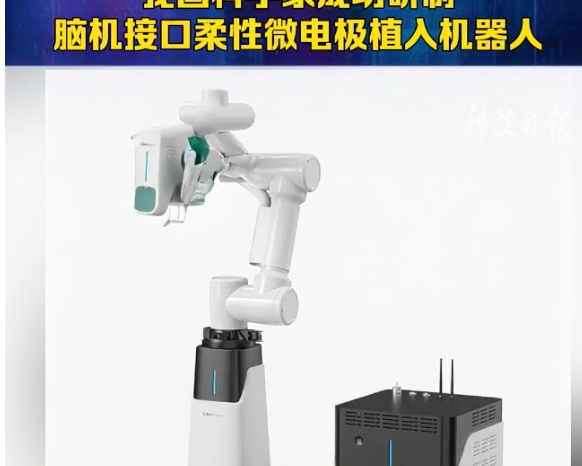
Researchers at the Chinese Academy of Science Automation Institute announced the development of a high precision robot aimed at the implementation of microelectrodes in brain tissue.
The device, called CyberSenseIt is designed to work on procedures related to brain-computing interface technology (ICC), and marks an advance in the methods used in neuroscientific and biomedical research. The information was released by the state newspaper Science and Technology Daily Last Thursday.
The robot operates automatically, inserting extremely thin and flexible microelectrodes, with dimensions similar to those of hair strands, directly in the brain of animals.
The structure and accuracy of the Cybersense are compared to those of a sewing machine, being able to deal with brain tissues considered fragile and sensitive, as researcher Yu Shan, member of the project, explained.
“Today’s implantable electrodes are thinner and flexible than a hair, which significantly reduces surgical trauma and the risk of immune rejection,” Yu said.
He explained that the main challenge of technology is the need to manipulate very soft brain structures, “as a tofu”, and that this task exceeds the limitations of manual intervention, thus requiring the use of specific robotic systems.
According to the report, the field of implantable ICCs integrates multiple disciplines, involving microelectrodes, electronic chips, neurosurgery, artificial intelligence and neural decoding algorithms. This complexity requires cooperation between distinct areas of science and continuous innovation in engineering and biotechnology.
Researcher Qin Fangbo, project leader and associate researcher at the institute, said the robot was designed with characteristics that significantly increase the effectiveness of the procedure.
According to him, the Cybersense has a high degree of automation, ability to implement large number of electrodes simultaneously, accuracy in spatial positioning, reduced operating time and ability to prevent blood vessels during the surgical process.
These qualities make the system compatible with different models of flexible and applicable microelectrodes in animal experiments such as non -human rodents and primates.
Qin also pointed out that Cybersense contributes to increasing success rates in the implementation of electrodes and to obtain more consistent data in electrophysiological analyzes performed after the procedures.
The system has already been used in tests with different types of electrodes developed by institutions such as the Semiconductor Institute of the Chinese Science Academy, as well as by the We-Linking company, based in Shenzhen.
The integration of these technologies has the potential to accelerate research in the ICC area and in the study of neural functions through brain activity records.
The report of Science and Technology Daily It points out that the use of CyBersense is allowing advances in research with neural electrophysiology, expanding the capacity to collect high resolution data and facilitating the analysis of the behavior of neuronal networks in living organisms.
Applications include both brain activity observation in specific situations and the possibility of developing neural signal control systems.
The robot also represents a step in the development of minimally invasive neuroscience procedures, expanding the safety of experimental laboratory operations and reducing the impact of procedures on studied organisms.
The automated approach allows greater control over critical variables of the procedure, such as depth of insertion, input angle and distribution of electrodes on the cortical surface.
The Cybersense development team plans to expand the line of devices based on the same technology. According to Yu Shan, next projects should explore new system functionality and expand its use to applications in different areas of biotechnology and neuroengineering. The goal is to consolidate China as one of the research and innovation poles in brain-computing interfaces.
Researchers believe that automated surgical robots will become central parts in the advancement of technologies linked to neural control and communication between biological and artificial systems. Cybersense’s acting in procedures that require extreme accuracy can, according to the team, open paths for new therapies and support systems based on reading and interpretation of brain signals.
The report concludes that robot development represents China’s strategic effort to expand its presence in areas of high technology and scientific innovation. The project is part of the National Agenda for Incentive for Artificial Intelligence, Biomedical Engineering and Applied Neuroscience, with impact prospects for medical, industrial and military applications.
Source: https://www.ocafezinho.com/2025/05/22/china-desenvolve-robo-para-implantacao-de-microeletrodos-em-cerebros-de-animais/

